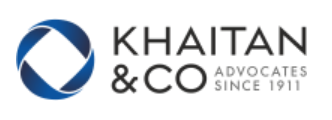Quick search
CTRL+K
Quick search
CTRL+K


Since 2010, the Global Law Experts annual awards have been celebrating excellence, innovation and performance across the legal communities from around the world.
posted 9 months ago
A buyer can minimise this risk by engaging with key executives of the target, having discussions with counter-parties of key commercial contracts of the target and have their buy-in on the potential change in control, and devise mechanisms to retain the key employees by providing incentives
An M&A transaction is fraught with risks for the buyers. But with risk comes the reward. Any M&A transaction has the potential of yielding massive rewards for buyers. There are some risks which have traditionally been part of any M&A transaction (such as title risk, information risk, pricing risk and synergy risk) but as businesses are evolving, the nature of risks are taking a different dimension as well. In current times, data protection and cybersecurity risks have come to the forefront in any M&A transaction in big data / information technology companies. It is critical for buyers to identify key value drivers and mitigate risks which are destroyers of value. Certain key risks that any buyer faces in a M&A transaction include:
1. Deal Competition Risk – The foremost risk is deal certainty. It is imperative to ensure that the buyer does not lose the deal to another player as it can lead to wastage of time, resources and money spent in baking the deal. A buyer is well advised to enter into a robust term sheet in the preliminary stages of the transaction which contains protective measures such as exclusivity, no-shop, break fees and confidentiality provisions. This will ensure that the seller is tied down and remains sincere in continuing negotiations with the buyer.
2. Market risk – During the course of a deal, there can be changes in market conditions which may impact the deal or even in some cases, make the deal unviable. Black swan events such as COVID-19 occur rarely, but such events can have disastrous consequences if they occur during the course of a deal. Buyers should incorporate material adverse change provisions, force majeure provisions, termination rights, etc. in the transaction documents to protect against external risks.
3. Counter-party risk – A buyer needs to protect itself against seller default on the deal. A buyer typically takes a recourse package against the seller to protect against future liabilities relating to past period; but if the seller fails to honour their financial obligations, then the buyer may be left high and dry. It’s important for buyers to conduct counter-party due diligence in case it is dealing with a high-risk seller. There are other measures which may be adopted to protect against this risk, such as taking an advance / upfront deposit, obtaining a parent or bank guarantee, structuring a holdback from the purchase consideration, escrow arrangements, set off rights, etc.
4. Pricing risk – Any buyer is concerned with over-valuing the business or over-paying the consideration. The commercial team of a buyer plays a critical role in mitigating this risk and arriving at an optimum price. A buyer should stress test the price drivers during the due diligence exercise, obtain advise from experts in the industry on comparable valuations, employ price adjustment mechanisms or structure the deal as an earn-out, to bridge valuation risk.
5. Business risk – M&A deals ride upon the strength of the business proposed to be acquired and its future potential. A buyer would therefore be naturally concerned with any adverse changes to the core business of the target prior to closing of the transaction as well as increased competition post-closing of the transaction. A buyer can minimise this risk by engaging with key executives of the target, having discussions with counter-parties of key commercial contracts of the target and have their buy-in on the potential change in control, and devise mechanisms to retain the key employees by providing incentives. The transaction documents should also contain standstill covenants to protect against pre-closing risks and non-compete and non-solicit restrictions on the sellers, to protect against post-closing risks.
6. Information risk – A buyer is always circumspect about the information being relied upon for making key decisions regarding the deal. If the deal information itself is inaccurate, incomplete or misleading, then the decisions are bound to be fraught with risk. Buyers need to conduct a through due diligence with a team of professionals on all aspects of the target business such as financial, tax, accounting, legal, environmental, real estate, any other specialist diligences as may be warranted. The transaction documents should also have comprehensive representations and warranties covering all aspects of the business as well as the transaction. Buyers should also keep information and inspection rights during the interim period between signing and closing to verify any material risks as they arise during the course of the transaction.
7. Regulatory risk – There is the risk of an M&A deal being derailed due to any regulatory scrutiny or intervention. A buyer would not want to find itself in a situation of failure to obtain any material regulatory approval. It is important for the buyers to seek legal advise on the regulatory risks impacting the deal whether in terms of obtaining any approval from the Reserve Bank of India, Competition Commission of India or sector specific regulators. The transaction documents should identify the responsibility of either party to obtain such approvals as a condition precedent to the transaction as well as an indemnity recourse in case of failure to obtain any approvals which were otherwise required.
A buyer is faced with varied risks at all stages of the deal right from its inception at the time of evaluating a target to post-acquisition of the target. The nature and extent of risks are dynamic and constantly changing and one needs to be diligent across the range of different risks that present generally or which are relevant to a particular sector. A buyer needs to apply appropriate risk mitigation tools depending on the nature of the risk and the deal stage. For e.g., an anti-corruption risk at the deal evaluation stage may be appropriately handled by a specialist anti-bribery and anti-corruption diligence, but if such risk surfaces post-acquisition, then extreme measures such as unwinding the deal may be required to be resorted to. Thus, it is important to have appropriate remedies available to the buyers at all stages of the deal in the deal documentation, to tackle internal risks (such as exclusivity, holdbacks, escrows, price adjustments, earn outs, etc) as well as external risks (such as material adverse change provisions, force majeure, insurances, consents from third parties / government authorities, etc.). Employing risk mitigation measures is a dynamic exercise, and implementing the appropriate mitigation tools is a matter of judgement.
Disclaimer – The views of the authors are personal and should not be considered as those of Khaitan & Co.
Author


There are no results matching your search.
Resetposted 2 hours ago
posted 14 hours ago
posted 14 hours ago
posted 3 days ago
posted 4 days ago
posted 4 days ago
posted 4 days ago
posted 4 days ago
posted 4 days ago
posted 7 days ago
There are no results matching your search.
ResetFind the right Legal Expert for your business
Sign up for the latest legal briefings and news within Global Law Experts’ community, as well as a whole host of features, editorial and conference updates direct to your email inbox.
Naturally you can unsubscribe at any time.
Global Law Experts is dedicated to providing exceptional legal services to clients around the world. With a vast network of highly skilled and experienced lawyers, we are committed to delivering innovative and tailored solutions to meet the diverse needs of our clients in various jurisdictions.